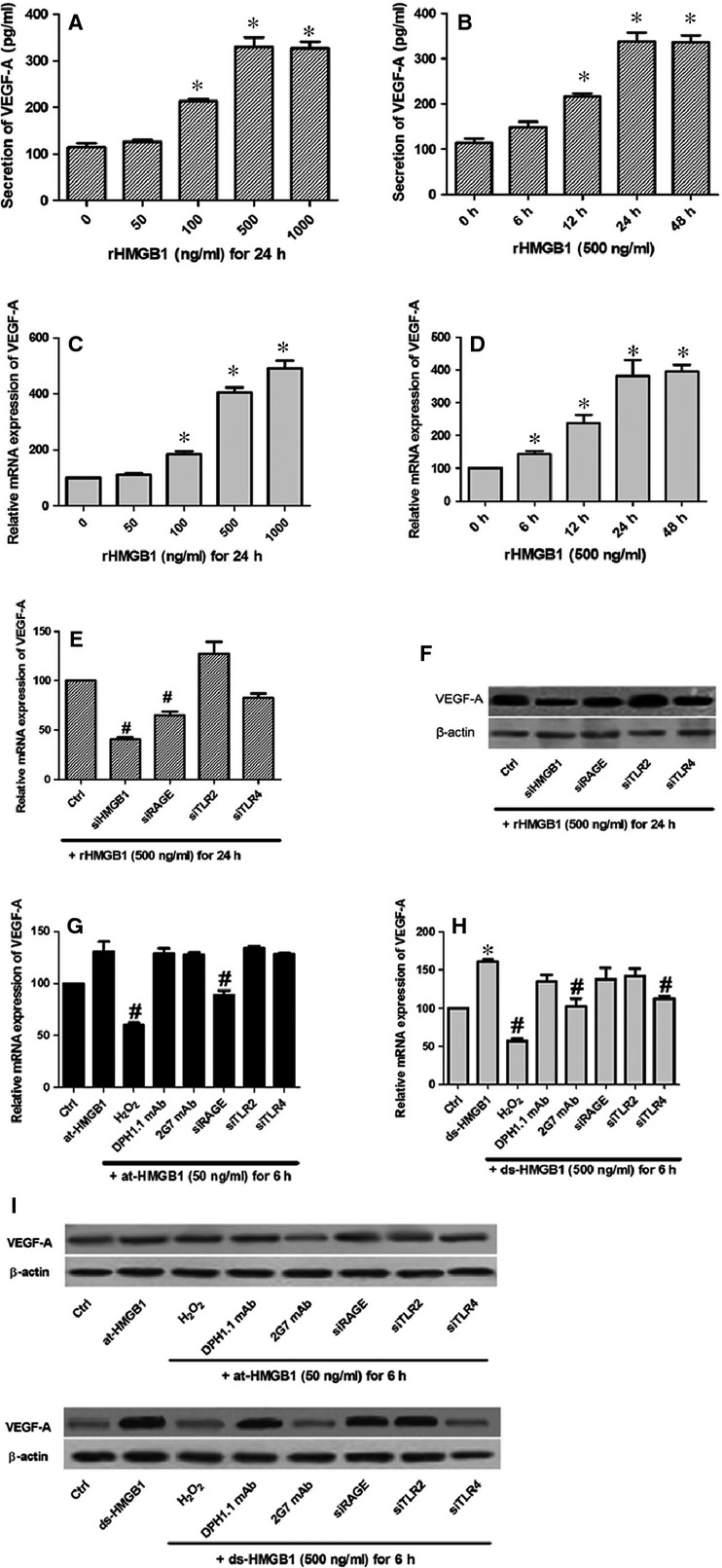Figure 1.

HMGB1, especially its disulfide-bonded form, could regulate the release of VEGF-A. Quantities of VEGF-A expressed after stimulation of HUVECs with increasing concentrations of rHMGB1 (A and C) or duration of stimulation (B and D). (E) At mRNA level, VEGF-A expression was significantly reduced via siRNA inhibition of HMGB1 and RAGE. (F) At protein level, siRNA targeting HMGB1, RAGE and TLR4 had an obvious influence on VEGF-A secretion. (G) at-HMGB1 (50 ng/ml) slightly up-regulated VEGF-A expression (P > 0.05), which was reversed by effects of H2O2 and si-RAGE. (H) Oxidation and inhibition by 2G7 mAb (1 μg/ml) or si-TLR4 significantly down-regulated the VEGF-A expression induced by ds-HMGB1 (500 ng/ml). For terminally oxidation, at-HMGB1 or ds-HMGB1 was previously exposed to H2O2 (50mM) for 1 hr. (I) The similar VEGF-A reduction by H2O2, 2G7 mAb or si-TLR4 was determined with Western blot, whereas there displayed no effect of at-HMGB1 or its associated inhibition. *Indicates a P < 0.05, representing a comparison of cells not exposed to rHMGB1, at-HMGB1 or ds-HMGB1. #Compared with control siRNA-treated cells, P < 0.05. All the data were mean ± S.E.M. of three separate experiments.
